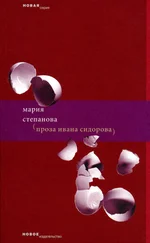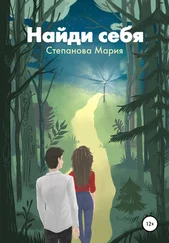16.
A gravel-tinted picture, you almost expect to feel granular dust when you touch its surface. Everything is gray: the face, the dress, the coarse woolen stockings, the brick wall, the wooden door, the twisting branch of a shrub. An older woman is sitting on a bentwood chair, her hands half-resting in front of her, she looks like she had started to move and then forgot what she was doing, and simply froze in that position, one hand half-covering her stomach. Her smile hasn’t quite reached her whole face yet and her expression is serene, as if the clock had stopped at midday, that quiet hour of moderate approval. Everything in the picture is underpinned by a sense of abject poverty, it is the unspoken language of the image: the heavy hands, unadorned by rings, the only dress of canvas, it is all kith and kin with the sparse weeds under her feet, they share the same root. She has made no attempt to clothe herself for eternity, to allow her workaday appearance a moment’s Sunday best. But this is as it is, because she has nothing else to choose from. This is my great-grandmother Sofia Akselrod, who used to read Sholem Aleichem in her village not far from Rzhev. This could be any year: 1916, 1926, 1936, it isn’t as if anything changed with the passing of time.
17.
A five-year-old girl holding a huge doll that isn’t hers. It’s a sumptuous doll, dressed in folk costume, an embroidered skirt and ornate headpiece, with a thick braid of hair and rosy cheeks. The mysterious thrill of the object! The little girl can’t even bring herself to look at the doll, and instead she directs her delighted gaze at the camera: Look at her! Look at us! So many contrasts: the little girl is frail and thin, and the doll is disproportionately large and plump; the little girl is dark-haired, her curls stick out in all directions, and the doll has a smooth flaxen plait. The lover and the beloved. The childish little hands hold the doll with a fervent tenderness: one palm cups the waist with care, the other hand encircles the doll’s porcelain fingers with the lightest of touches. The image is black-and-white, and so I can’t tell the color of the dress, with its embroidered сherries, or the color of the extravagant bow on the top of my mother’s head.
18.
A tiny picture, the epaulets are faded and impossible to read, but I know my grandfather reached the rank of major and was only demobilized in 1944. This is clearly a picture taken before all that. The face is as closed as a fist, it expresses nothing but strength: the arched brows, the ears close to the head, the whites of his eyes, the mouth. All of it molded to form a single billiard ball: a single typical portrait of the military officer at the end of the 1930s. A collective image of a face, one portrait standing for everyone, like the faces of the heroes in Aleksei German’s film My Friend Ivan Lapshin . I watched it when I was fifteen and I’d hardly seen any proper films, and I couldn’t be sure of what was happening, or who the main character was, who was in love with whom — all the characters seemed interchangeable to me, all cut from the same piece of boiled army wool. There was something familiar about them, their speech and posture all seemed vaguely familiar, as if I’d known it for a long time, and only years later I realized that every one of them was in some sense my grandfather, his antique courtesy and eau de cologne, his sternness, his shaved cheeks and bald head.
19.
Somewhere by a stream in the mid- to late 1930s two young women are posing for a photograph and they can’t stop laughing. One has let her hair loose, she leans down and is about to lay her white knitted shawl in the grass. The other is holding her hat to her head in the invisible breeze. They wear short, lightweight dresses. Their bags are already lying on the ground and their underclothes are crumpled at their feet.
20.
It’s raining and people are wandering through the wet meadow like lost souls. A whole crowd of people, about twenty in all, the men in straw boaters, the women in long skirts, the hems brushing the damp grass, above their heads the hopeless domes of parasols. A long way off, on the horizon, there is a wall, but who knows what was behind it. To the right is the glimmer of gray water. They stand in groups of twos and threes, some apart, some closer, some farther away, and the longer you stare at them, the clearer it becomes that this might resemble the landscape of the afterlife, its shoreline, where each of us is quite alone.
On the back of the photograph is a note written in French. Handsomely written, all curlicues and flourishes. I translate it as I read: “ Montpellier, 22 of the VI month, 1909. To remind us of our zoological excursion to Palavas. How sad it was… The weather let us down. D. K. Genchev. For Mademoiselle S. Ginzburg, Pochinky. ” Palavas-Les-Flots is a small resort south of Montpellier where a long spit of dunes divides the Mediterranean from inland freshwater lakes. The flat beaches are covered with gray sand, and there are colonies of pink flamingos not so far away, which perhaps in part explains the zoological nature of the trip. Nowadays, Palavas is a busy and inexpensive holiday destination, but one hundred years ago there was nothing there, the hotels had not yet appeared, only the newly built church of St. Peter.
Among the wanderers in the meadow there is one woman who holds herself very erect. She stands on her own, turned away from the camera, her slender back in a light summer jacket is the axis of the image, she is the central pole of the stopped carousel wheel. She wears a stiff-brimmed hat and her head is thrown back, she is carrying a ragged bunch of flowers. I like to think it is my great-grandmother Sarra.
I must have been about twelve. I was hunting around for something interesting to look at. There was plenty of interesting stuff: with every death a pile of new objects appeared in our apartment, deposited just as they were , trapped in a sudden end state, because their previous owner, the only person who could have freed them, was no longer among the living. The contents of Grandmother’s last handbag, her bookshelves, buttons in a box, everything had simply stopped, like a clock, on a particular hour of a particular day. So many objects like this in our house. And then one day I found an old leather wallet in a far drawer. It contained a single photograph.
I could see right away what sort of a picture it was. Not a picture, or a postcard or, say, a picture calendar. A naked woman lay on a divan, looking at the camera. It was an amateur shot, taken long ago, already yellowing with age, but the feelings it aroused in me were utterly unlike the way great-grandmother’s Paris letters or grandfather’s jokey poems had made me feel. This picture added nothing to the throat-tightening feeling of family collectivity, to the black-and-white many-headed chorus of unknown relatives, always happening just behind my back, or to the hunger I felt when I saw something unknown and foreign: The promenade at Nice by night, on a prerevolutionary postcard. There was something clearly illicit about the photograph, although that could hardly have bothered me, quietly avoiding my parents, and on my own private search for the forbidden. There was a faint licentiousness in it, too, although the woman’s nakedness was open, straightforward, and full to the camera. Strangest of all, the photograph had no relationship to me at all. It belonged to someone else. The fact that the wallet had lost its owner long before did not change this feeling of strangeness.
The woman lying on the leather sofa was not beautiful. My sense of aesthetics had been formed by the cast gallery in the Pushkin Museum and a book on ancient Greek myth, I was affronted by her many bodily defects. Her legs were shorter than they were supposed to be and her breasts smaller, but her bottom was much larger and her tummy pudgy in a way that was very unlike marble. All these defects made her look lively, as anything living in ignorance of perfection looks lively. She was grown-up, in her thirties, as I now realize, and not a “nude,” simply a completely naked woman, although that wasn’t the most striking thing. The woman was looking straight at the viewer — that is, at the camera, that is, at me. Her stare had such intensity: it was utterly unlike the radiantly unfocused gaze of a goddess, or a model in an artist’s studio.
Читать дальше











